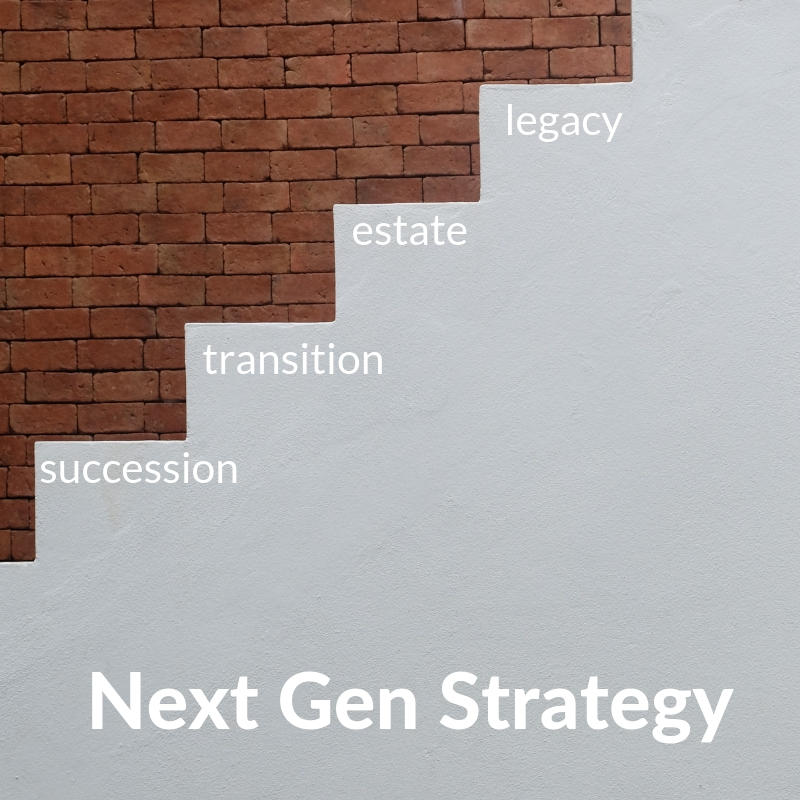It’s inevitable. One day, you will step down from running your business. The timing and transition for when and to whom you relinquish control are often among the hardest decisions that a business owner will make. That’s precisely why more than 70% of business owners fail to put a strategy and written plan into place.
Sadly, the hard truth is that there comes a day when they can no longer run their business, and they are under-prepared for what comes next. The burden can be left to the family to make rapid and sometimes uninformed decisions—to the detriment of the business and its potential legacy.
“You don’t have to see the whole staircase, just take the first step.” – Martin Luther King, Jr.
“If you’ve ever taken even a fraction of a moment to wonder what comes next for your personal or business goals, then now is absolutely the right time to establish a plan to reach those goals,” says Jim Rein, principal and leader of Pinion’s Next Gen advisory team.
Studies show that the more time you have to create and follow a strategic roadmap, the more successful the long-term plans for your business, family, and retirement goals will be.
Getting Started is Widely Misunderstood
Where to begin. That statement alone can seem overwhelming when you’re in the middle of making critical decisions for your business’ survival. It’s far too easy to sweep any future viewpoints under the rug for a day when you have time to deal with it. After all, that’s personal stuff and you have a business to run.
But for most owners, business is personal, and the sooner you address both together, the easier it will be to protect what matters most under your terms – communicating with family, grooming the next generation, assuring a legacy, transitioning when it feels right, enriching retirement lifestyle, protecting assets, and creating peace of mind.
Taking that Crucial First Step
Whether you are five, 10, or even 20 years away from determining when and how you’ll leave your business, it’s important to anticipate and plan now. Why? Because if you want to leave on your terms, with the outcomes you desire, then it stands to reason that you will need formal plans to ensure you stay on track to meet these goals. And make no mistake, building and securing the assets and wealth needed to achieve goals for your family and business…takes time, strategy, and forethought.
“You will not be able to just rely on the past to plan for the future,” says Rein. “You need to understand what is required to align with future goals. All plans should be created in alignment with the long-term strategic vision of the business.”
What to Expect Along Your Long-term Strategy Roadmap:
- Succession: In the simplest of terms, a “succession plan” will include a path of discovery – defining the vision you have for your business and legacy, ultimately. It incorporates identification of future leadership and proactively guiding that progression, communication with family, and goal alignment.
- Transition: The “transition plan” encompasses the timing it takes to reach your long-term goals. It provides a clear view of the financial benefits, how to maximize assets and minimize risks, and all other considerations surrounding the future sale, purchase, or transition of a business.
- Estate: An “estate plan” is specifically focused around business and personal financial strategies to optimize inheritance, gifting, and entity structures while decreasing tax burden and providing for asset protection. It involves setting up plans that will complement legacy and transition strategies through the increase of wealth.
- Legacy: Lastly, the “legacy plan” is the development and deployment of your long-term goals. This includes the accumulation and management of wealth, as well as meeting your retirement lifestyle goals, and accounting for life’s uncertainties and mitigating risks.
The roadmap is designed to be a long-term strategy to support you in reaching your goals. These plans are intertwined and dependent upon one another. An advisor can help you get started with your roadmap, monitor progress, assess and circumvent risks, and lead you on a steady path toward the future in your eyes.
Pinion’s Next Gen Services team helps business owners to develop and solidify long-term plans, navigate the transition process, and protect the asset base they have worked so hard to build. Register for our upcoming webinar for more information.
Stop putting off taking the first step toward your business’ and family’s future…contact Jim Rein, CPA and Next Gen leader, at jim.rein@pinionglobal.com to protect what matters most to you.









